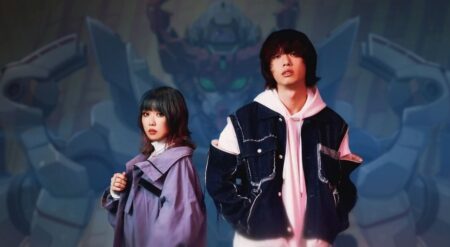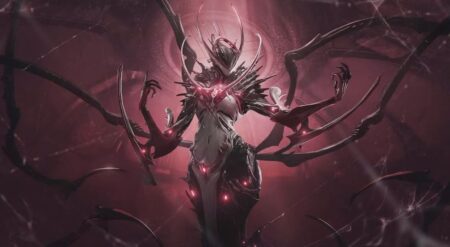
Artist and editor Monte Beauchamp has teamed up with Dark Horse Comics to bring back his iconic series Blab! for a new generation. The newest volume of this storied series brings attention to unsung heroes in comic book creating history, highlights the styles of art and storytelling that made classic comics succeed, and does it all with a creative and entertaining flair.
But Why Tho spoke with Monte to learn what makes the newest rendition of Blab! unique, and why he was excited to return to the series after such a long time.
BUT WHY THO: How do you describe Blab! in your own words? What kind of book is it, and who is it for?
MONTE: About halfway through the original run of eighteen issues, I described Blab! as neither book nor magazine but a non-linear experience; a party on paper, so to speak. With this latest incarnation, I’d say it’s for those who enjoy sequential art, contemporary and vintage illustration, and stories of a biographical nature.
BUT WHY THO: How does it feel returning to Blab! after such a long hiatus? Why was now the time for another new iteration?
MONTE: It’s like a breath of fresh air. Working within an entirely new format once again has proven to be totally invigorating. It’s challenging. It’s a path of self-discovery.
As to why now? With the launch of Blab World (by Last Gasp of San Francisco, who picked up the publishing reigns in 2010), fifty percent of its contents consisted of work by our Lowbrow and Pop Surrealist contributors, that, in turn, we’d offer for sale in our annual, Los Angeles-based gallery event — The Blab! Show, sponsored by The Copro Gallery.
As I began work on the third volume, my agent sold one of my book concepts to Simon & Schuster that demanded my full attention 24/7. And after its release, she sold yet another one of my concepts (co-authored with and illustrated by Greg Clarke), published by an imprint of HarperCollins. And that, too, required a ginormous amount of work. After that project was put to bed, I began to rethink Blab World and decided to split it into two publications — one devoted to contemporary artists (still to be announced) and one that would be sequential art-focused.
BUT WHY THO: How does this new iteration of Blab! compare with previous Blab! projects you have edited? What is similar, and what is different?
MONTE: Although there have been four versions prior, the new Blab! is a horse of a different color. Blab! first began as a self-published Midwestern comics fanzine, morphed into a square-bound digest published and distributed on a national level by Kitchen Sink Press, was revamped into an LP-sized format, and published by Fantagraphics until its eighteenth issue. I overhauled it yet again as a full-color hardcover, Blab World, published by Last Gasp.
The big difference is that between then and now, I know exactly what I’m doing in putting a publication together — from editorial to art direction, to design, to typography, to working with talent, selecting appropriate paper stocks, and to prepping the production files. Back then, I was flying by the seat of my pants. Another significant difference is that this new version is largely biographical; whereas much of the prior material was pretty far-out.
BUT WHY THO: From where was your passion for comics and literary history born, and what has inspired you to channel that passion into books illustrating the industry’s many histories?
MONTE: My passion arose within our home when I was a very young child. My mom was a big fan of Dorothy Parker, Ogden Nash, and particularly The New Yorker — and it was in their pages that I discovered the gag cartoons of Charles Addams, which spawned a lifelong interest in the form. I love the cartoons of Roz Chast, Gary Larsen, Gahan Wilson, and R. Taylor. It was also her love of writing and poetry that eventually led to my interest in authors by the likes of Ken Kesey, Truman Capote, and Sam Shepard.
In regards to my dad, that’s an entirely different story. He instilled in me the concept of forbidden fruit. He was a high achiever and had a big disdain for comic books, especially Mad magazine, the Feldstein-edited version. He made us keep them in the basement, and as soon as our comic book pile became a foot tall —POOF, it would disappear, which happened time and again. Then came the day that I discovered a big pile of ashes in our basement incinerator. So, I got wise to him and would keep them well stashed in the bedroom and attic.
It was Christmas of 1965 that my mom gave me Jules Feiffer’s The Great Comic Book Heroes, which was her way of telling him to back off. She liked that I drew cornball cartoons and had a deep love of comics. So it was my mom and that Feiffer book that kept the creative flame burning.
BUT WHY THO: What is your editorial process for creating a Blab! anthology? What kinds of material are you most interested in including, and how do you be sure to balance various styles, tones, and subjects?
MONTE: It’s a multi-layered process that requires finding compelling vintage ephemera from the past to merge with today’s fresh artistic talents such as Noah Van Sciver, Sasha Velour, Giselle Potter, Ryan Heshka, and Greg Clarke. Because Blab! is now biographically based, I work with the contributors to find a topic they’re jazzed about, and from there, I cut them loose to go straight to finish. Some prefer to get my feedback along the way, whereas others prefer not to have feedback. So, once I have our contributors lined up, I’ll fill in the blanks with a mix of vintage material.
Back in the day, I developed a five-step process when selecting talent and vintage material for Blab!:
1) Does the work have CHARACTER? Is it eccentric, obsessive, cornball, carnivalesque? Does it have an unsophisticated charm about it?
2) STYLE: I like folk, minimalism, modernism, contemporary, art brut, abstract, pop, surrealism, and cartoon techniques.
3) The MEDIUM. Variety is key. Acrylic, oil paint, woodcut, etching, silkscreen, gouache, colored pencil, pastel, crayons, India ink, dyes, watercolor, and mixed media.
4) The ELEMENTS OF ART: line, texture, color, form, space, shape, and value.
5) EMOTION: does the work have heart, soul, spirituality, joy, or pain about it? Does it communicate something personal that comes from within the artist? So visually, diversity was and will continue to play a key part.
BUT WHY THO: What do you hope that readers take away from Blab!?
MONTE: That the new iteration resonates with them. If they feel the high verve that I feel, I’ll have done my job!






